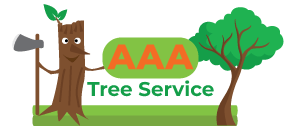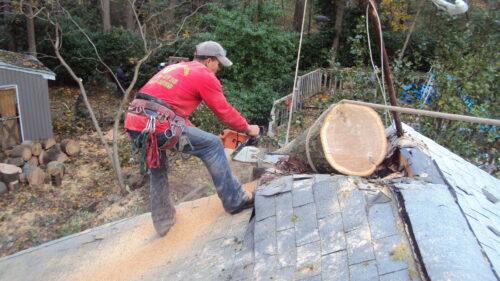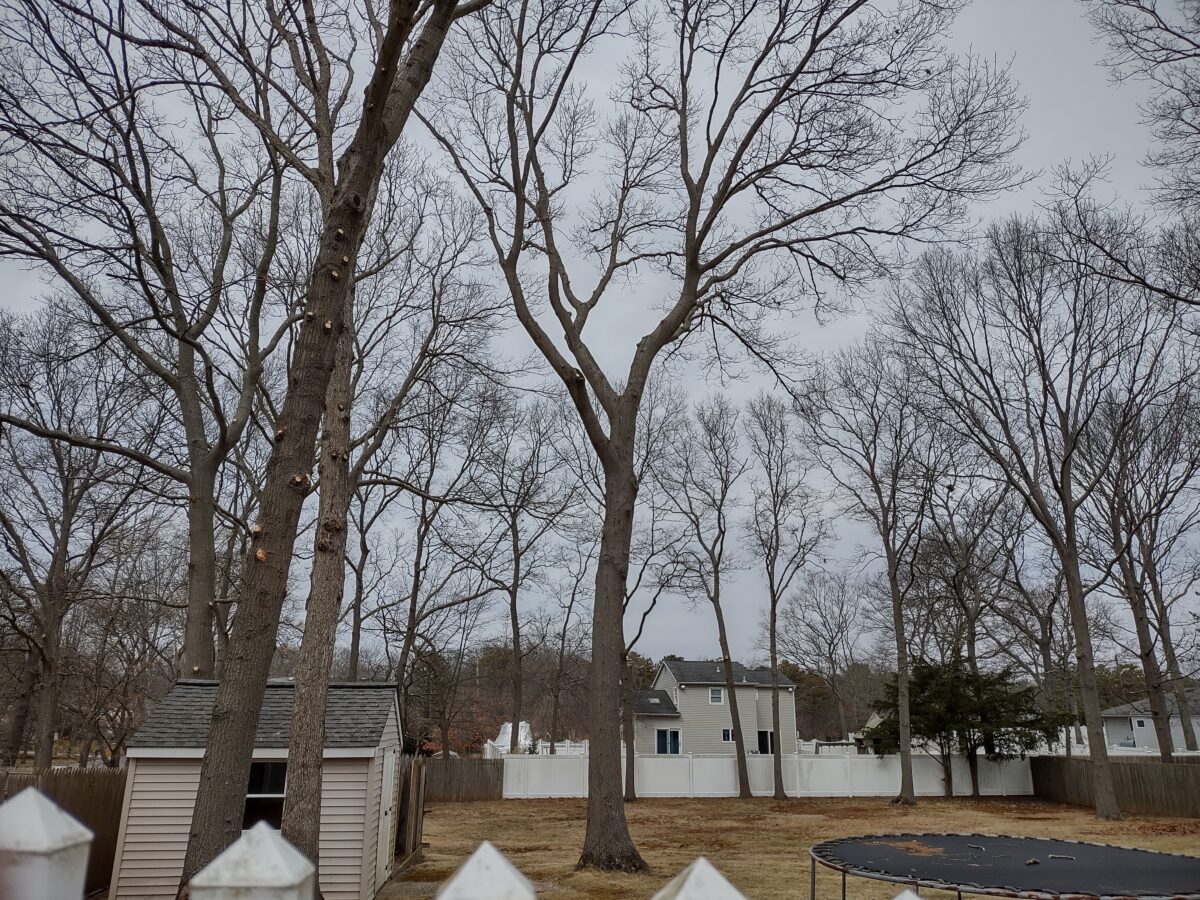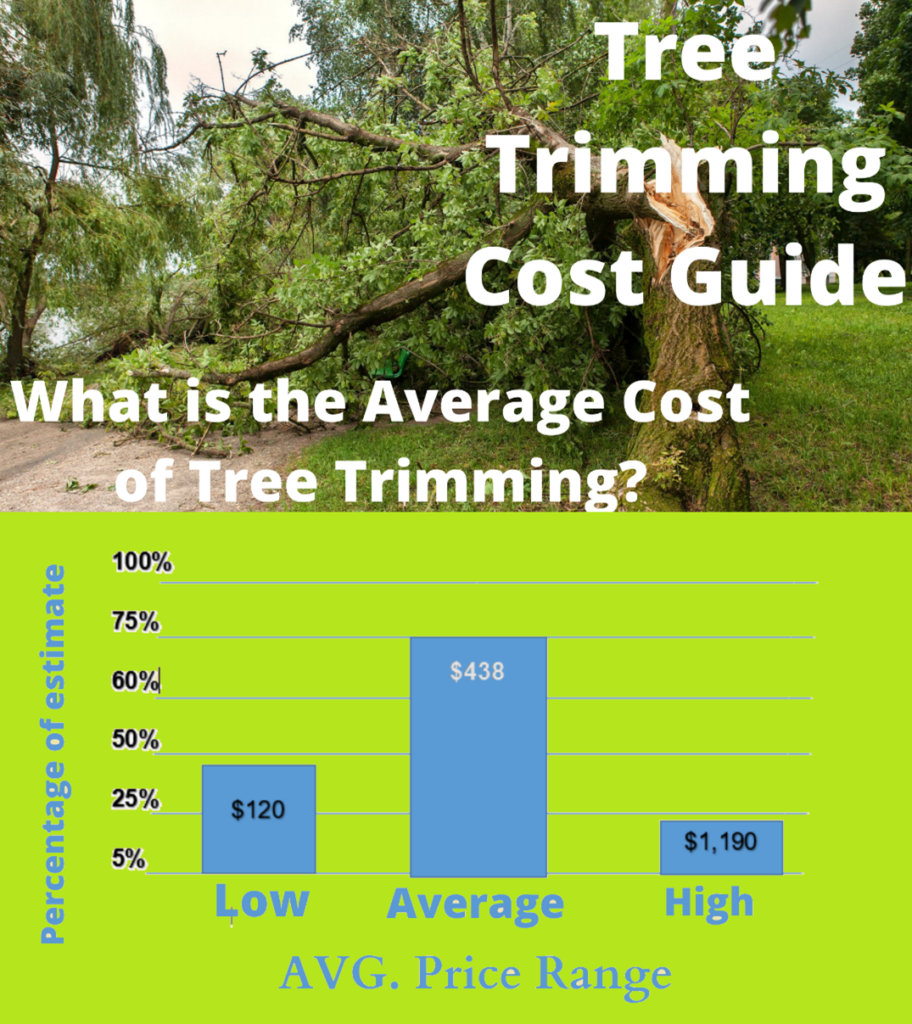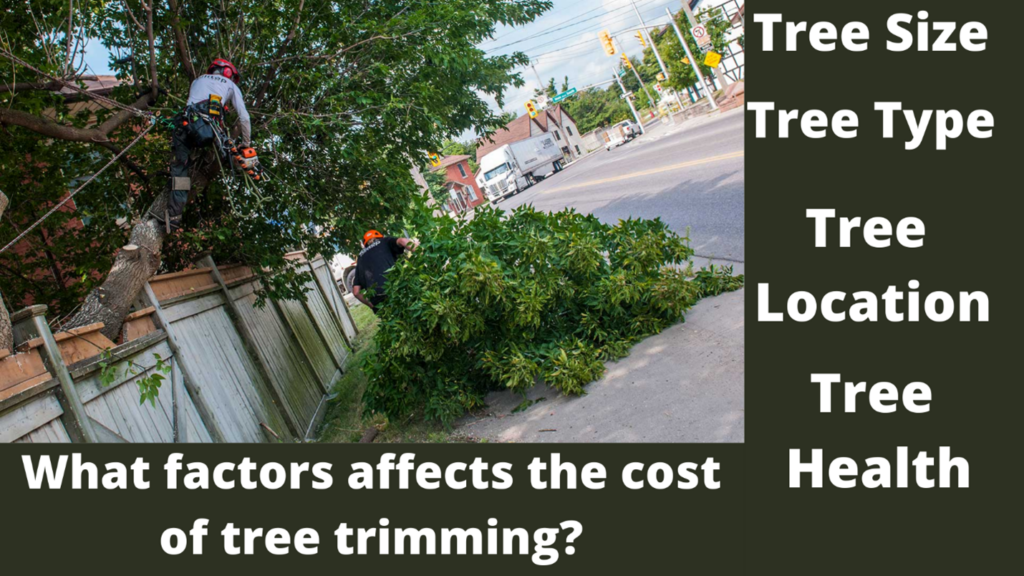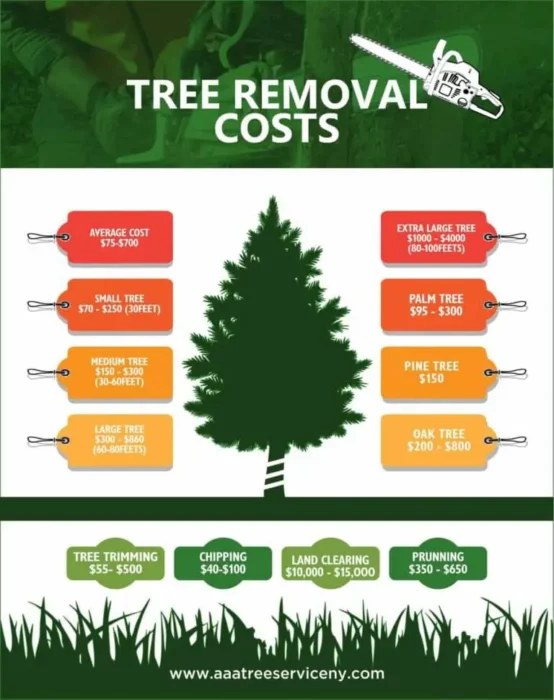Tree removal Average cost Cut Down a Tree Trimming, Pruning Estimate Why is Tree Removal Important Factors to Consider Before Removing a Tree What is the Average Cost of Tree Removal?
are indeed a life saver. Trees are known to provide an improved air quality and oxygen to humans, conserve water, preserve soil, and support wildlife by providing shelter to these animals and also
climate amelioration
It is however important to note that as beautiful and helpful as these trees can be, they could turn out to be a threat to human life and property if they become diseased, infected, damaged, has its branches growing over a power line or property, or falls during a heavy storm. This is the stage where a quick removal is advised to be the best option. At these stage, it is not advisable to do it on your own you need a professional Tree service company who would do a perfect removal.
Why is Tree Removal Important
Trees that have lived over a long period of time have the tendency of becoming really weak. The older they become the more tendencies they have to start to rot. Their roots, branches and barks begin to rot. They could fall even at the slightest drop of rainfall and wind. They become threats to human life and property. Damages to property should be avoided, therefore a total removal of the trunk appears to be the only solution. Similarly, in times of heavy storms, weak and decaying trees are liable to fall.
Also, a tree with rotting roots
is not only dangerous but it could also cause harm to the concrete flooring around the spot it was planted. This will surely result in an additional expense which is definitely going to be an unwanted addition to your budget. Also dried leaves and branches are easy attractions to forest fires. Similarly they may spark fire during lightning strikes. A professional Tree service company is a life saver in
situations like this. They help protect
your family and neighbors from any potential threats related to trees. You would be charged lesser than you would eventually have to pay in case of property damage if trees are not removed as at when they should. The tree service company shows up within moments of getting in touch with them. They come fully equipped with machineries and tools for effective and efficient service delivery.
Factors Considered When Determining the Cost of a Tree Removal:
To some degree, most factors are usually tied with how they influence the amount of time needed to complete the tree removal process. For dangerous jobs, more time is needed to complete; also trees located in poor spaces will require more time to remove, so also will trees that are above homes, pulleys and arborists blocks would require the use of lowering ropes with arborist blocks and pulleys. This would definitely take more time and also cost more. Jobs that require the use of heavy machinery like cranes would also cost more than regular jobs. The following however, are the breakdown of factors to consider when determining the cost of a tree removal. price
Using a Tree Removal Cost Calculator
Before you hire a tree removal company or do anything else with regards to a tree in your yard, you should make an accurate calculation of tree removal cost. This will allow you to properly budget for the job and not overspend. There are many online calculators you can use for tree removal cost; they
will give you an idea of
what you need to do to estimate tree removal cost. These online tree removal cost calculators will give you a range of different prices to give you an idea of how much it will cost near you. It is also important to keep in mind that all tree removal jobs are different depending on the area you live in. You have to make sure you understand what type of tree you will be removing before calculating any costs.
If you live in a small town
where there is only one tree per acre, you will obviously need to remove the tree yourself. If your house is on a large piece of property, and your tree is less than one hundred feet tall, you will most likely need to hire a tree removal company to take care of it for you. In most cases, tree removal companies
will use a combination of chainsaws
hammers, chisels, and power saws to cut down trees that are more than one hundred feet tall. If your tree is more than one hundred feet tall, they may also use a piece of heavy equipment called a trimmer to cut it down to a certain height. The average tree removal cost near me will usually range from one hundred fifty to two hundred dollars, depending on the severity of the tree removal process.
Even if your tree is smaller
than this, you still need to use a tree removal cost calculator in order to determine how much it will cost you. Using these tree removal prices online will help you determine what options you have available to you. Do you need the service of an expert? Are you comfortable removing a tree by yourself? If so, these calculators will help you determine whether you can afford to do so or not.
1) Size of the Tree:
The larger the tree, the more the time it would take to fully remove. This would require more manpower and would definitely cost more.
2) Location of the Tree:
Another big factor is the location of the tree. The branches and leaves are usually placed into a wood chipper after which the word chipper shoots the chips into the back of the chip truck. Usually, the truck and chipper should be positioned together but in instances where the tree is next to a home of a backyard, the debris would have to be dragged down to where the truck and wood chipper is positioned. This would result in more work time and an increase in the price of the job.
3) The Risks Associated with the Removal:
Another reason tree removal services for residents are so expensive is due to the risks of the job and the costs associated with the risks. The costs associated with risks include costs of insurance, specialized equipment with which the job or task will be carried out and necessary training one must undergo to become a professional. Having said that, some jobs are considered as been more hazardous than others. Jobs in these category take more time to complete and they usually require the use of specialized rigging techniques and equipment.
4) Will the job Require Rigging Techniques during Removal?
“Rigging” is the use of ropes, pulleys and other specialized equipment to secure branches and sections of wood (usually sections of the trunk) before cutting them. Rigging allows the branches to be lowered to the ground in the safest means. Usually, these techniques are for large branches. These techniques would probably take more time thereby costing more.
5) The Condition of the Tree:
Before a tree service is carried out, the arborist makes proper checks on the condition of the tree. This helps him determine the best methods to use to safely remove the tree. If you want them to work on a dying, dead or decaying tree, you would be paying more money because it would require more
than the traditional method
of climbing the tree because since the branches are dried and decaying, the climber is at the risk of falling off the tree. It is advisable to contact an arborist immediately you start to see signs of decay so as to reduce the cost of paying more when the health of the tree declines even more by the day.
What is the Average Cost of Tree Removal?
$75 – $700 fee is paid by an average home owner to have a tree removed from his property average homeowner will pay between $75 and $700 to have a tree removed. The national average cost is $560. It should however be noted that there are four main factors that is sure to affect the cost of your tree removal: the size (height) of the tree, its condition, diameter and location.
Just as it has been stated above, the height of the tree can affect the cost of tree removal. Other factors that can affect the price include certain species and whether or not the tree has fallen. The following are the average costs of tree removal depending on the size of the tree:
Small Tree Removal
To remove a small tree, it costs approximately $70 to $250 on average. Small trees are usually about 20 feet high, it would cost less to remove but more if there is a need to transplant it. The right direction will then need to be chosen. To save cost, you can dig a hole ahead of time. Always make sure to call the utility company to know if there are any pipeline works under or near the tree before removal so that proper precautions can be taken to avoid damages.
Medium Tree Removal
The average cost to remove a medium tree is $ 1500 to $3000 and varies by height, which could range anywhere between 30 and 60 feet. You would have to pay additional expenses like removing the stump, getting rid of any debris, branches, leaves, as well as cleanup fees. When you speak to the professional, be sure to ask if they charge per tree or per hour, as this could widely vary what price quotes you get per arborist you call.
Large Tree Removal
To remove a large tree on an average costs approximately $3000 to $5000 .large trees ranges from 60 to 80 feet tall and definitely requires more work.
• Very Large Tree Removal
The average price to remove a very large tree is around $500 to $1400. This is because very large trees can be 80 to 100 feet tall or more. They are the most complicated to remove. They require more equipment and therefore cost more.
Palm Tree Removal
To remove a palm tree is approximately $300 to $1200 if their height is 30 feet. If they’re 80 feet tall or more, you are likely to spend $1,100 to $1,500 to have the tree professionally felled. Palm trees have to be roped instead of simply cutting them down because they have teeth. The taller the palm tree gets, the more weight they have. This means their roots are enduring a lot of stress and can eventually break, falling down into the yard’s fence or your home.
Pine Tree Removal
The average price to remove a pine tree is relatively around $1700 for a 40 feet tall tree, but for the 80-foot pine trees, it will cost about $4000. This is because of the work and potential danger involved. There could be additional work involved with removing the branches and cones depending on the breed of pine tree involved. Professionals have to wear a lot of safety gears to avoid scratches and eye contacts with spines while cutting.
Oak Tree Removal
Oak trees reaches up to a height of 60 feet. The average cost to remove an oak tree is approximately $2000 to $8000. Oak is a even more difficult tree take down due to its very strong wood. Factoring in its strength and girth, professionals will use heavy-duty equipment to fell the tree. It just depends on the species of oak you have and how tall it is.
Fallen Tree Removal
The average price to remove a fallen tree is about $50 to $100 depending on the size and species of the tree. Fallen trees are less expensive to remove because a lot of the work is already done. You might pay additional costs to have the pieces hauled away. If the tree needs to be pruned, branches removed before cutting it into pieces you will pay more for that service as well. If you want to have the stump removed where the tree broke off, that will cost an additional $50 to $100, depending on its girth and whether you have it grind or completely removed.
Average Prices For Extra Services
Whenever a tree removal service is hired, be sure of what they are gong to do. Never should you assume that tree removal would automatically include cutting up and hauling away. Most times, these services come with an extra charge. Stump removal is not always part of the deal unless otherwise stated. Below are some of the general idea of what extras cost: you hire a tree removal service, you’re going to want to be sure of what they’re going to do. Don’t assume that tree removal also includes cutting it up and hauling it away. In fact, that is often an extra charge. Also, unless otherwise stated, stump removal is not always part of the deal. Here are some general ideas of the cost for extra services:
Stump Removal:
After your tree has been cut down, the stump will remain unless you pay extra to have it removed. You are then charged based on the amount of stumps you want to have removed. Other factors that could affect the price include the age of the stump, the condition of the soil, the root system, and the hardness of the wood. Here are some examples of some general costs, not including cleanup:
Diameter:
Most tree removal services charge about $2 to $3 per inch while some would charge a minimum of $100.
Per Stump
Some tree removal services will charge a certain amount for the first stump, around $150 for example, and a lower rate for each extra stump, such as $50.
Clearing Land: if there is a piece of land you want to have cleaned with lots of stumps to remove the cost is around $150 on an average per hour.
Trimming/Cutting: Prices range from $55 to $600 depending on the size of the tree with an average between $85 and $300.
Chipping
The cost of chipping averages from $100 to $200 small Pile Branches
Removal: removal of limbs can add an extra $50 on average.
Log Splitting: Breaking the logs for firewood is often an extra charge, usually about $75 to 150 Small Tree Logs
Travel: A tree removal service will charge extra for travel. This varies widely, so it’s impossible to give an idea of the cost. It is safer to have your tree inspected after a heavy rain, wind or storm. The worst time to pay for tree services is after the damages have been done.
Tree service Estimate Contact Us Here
